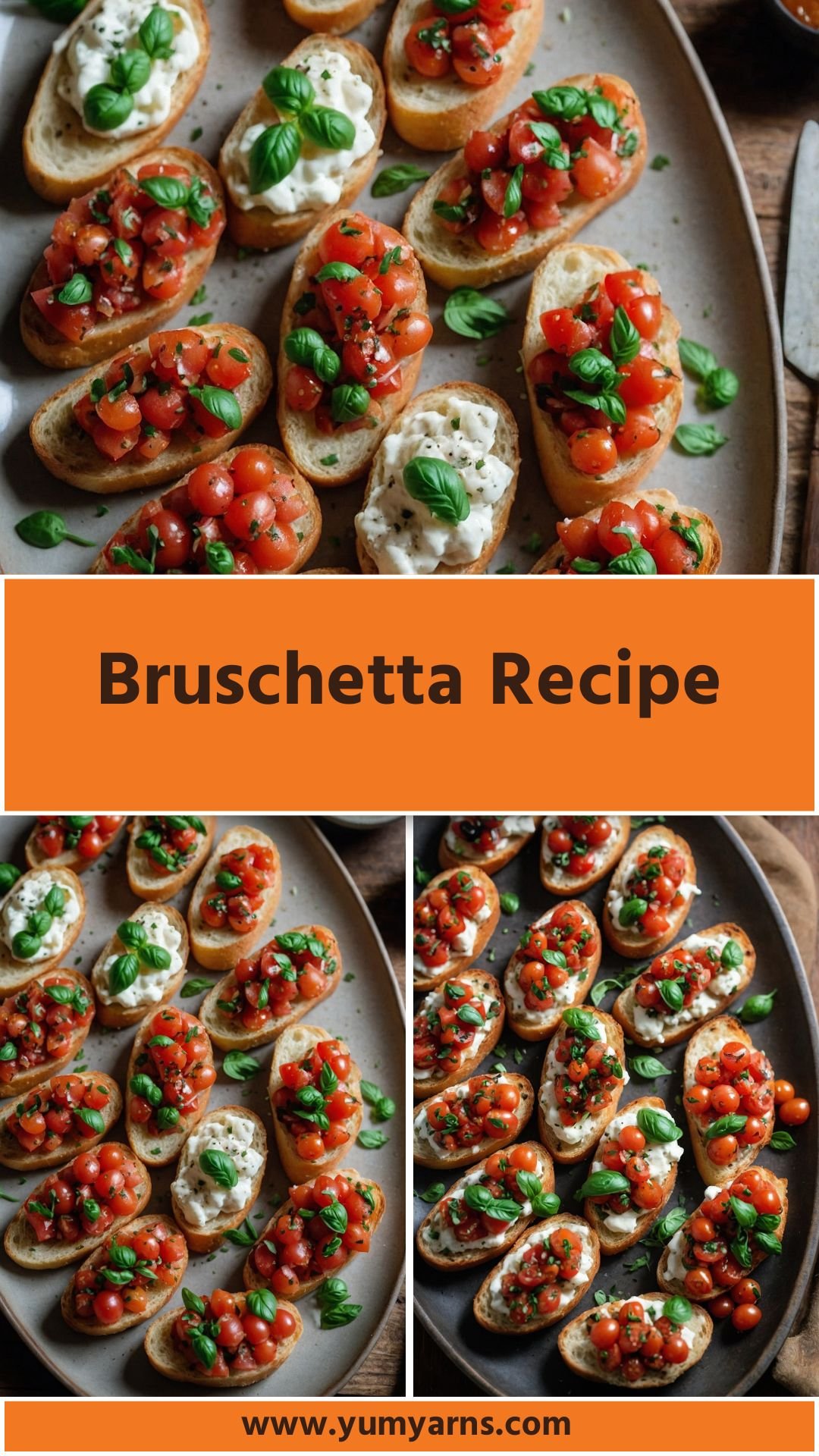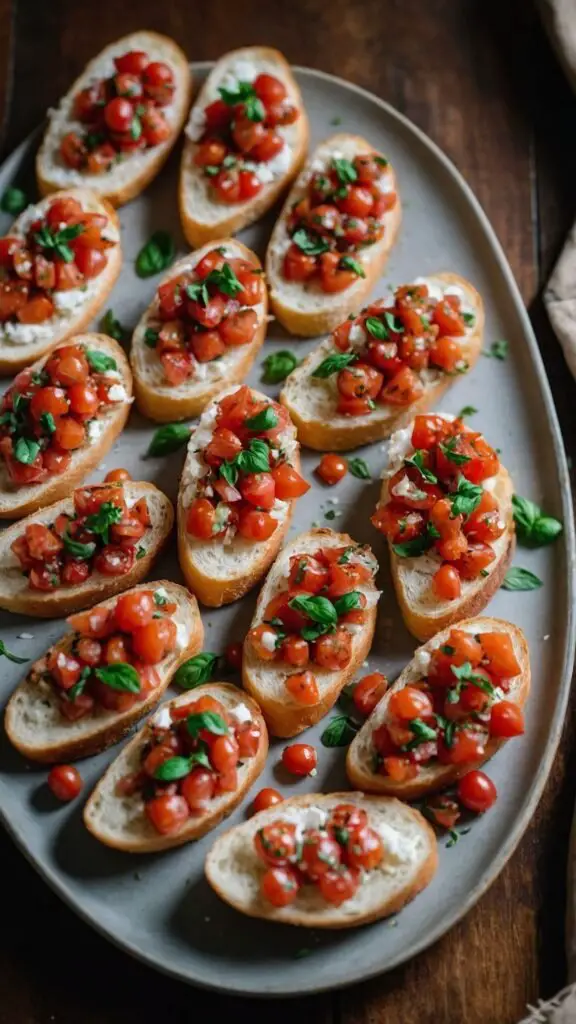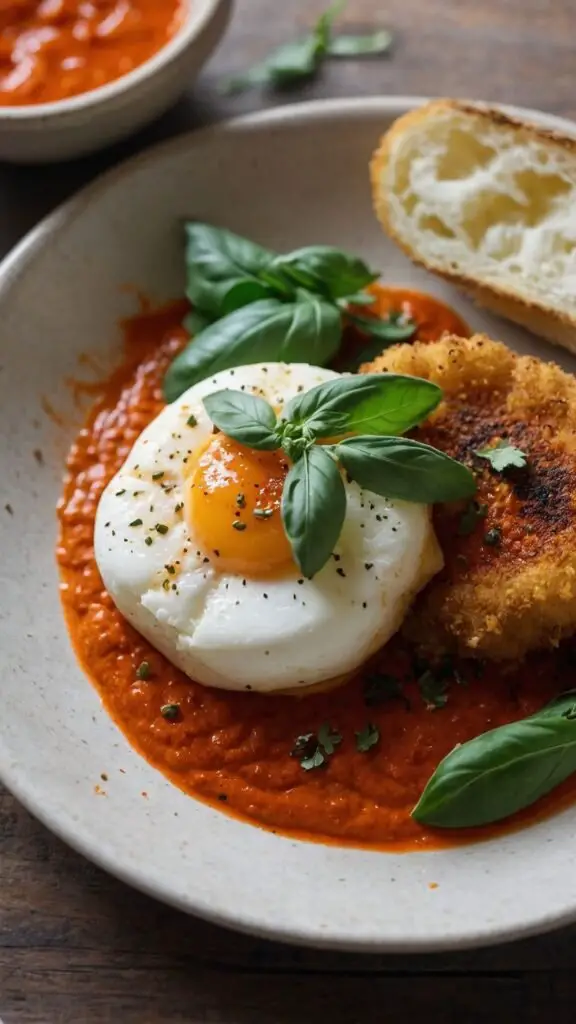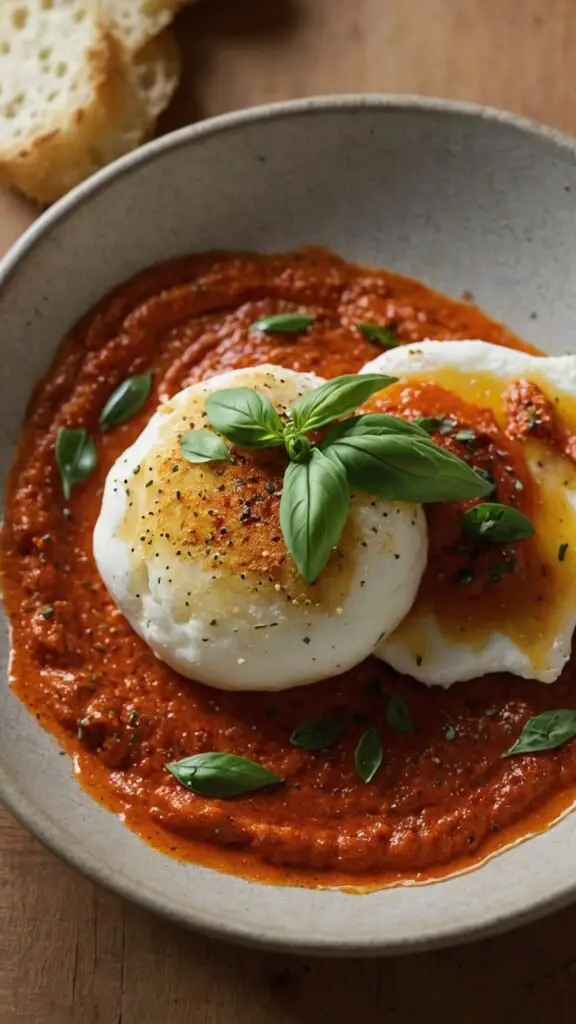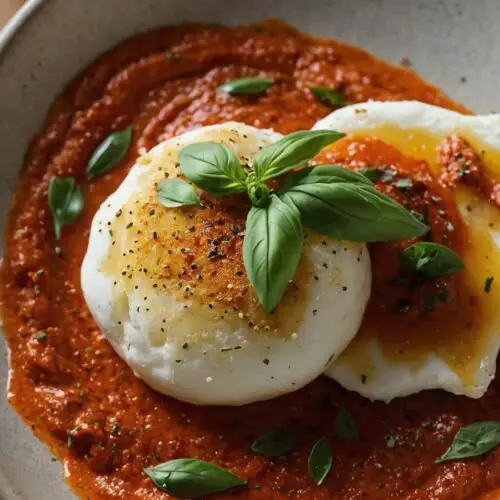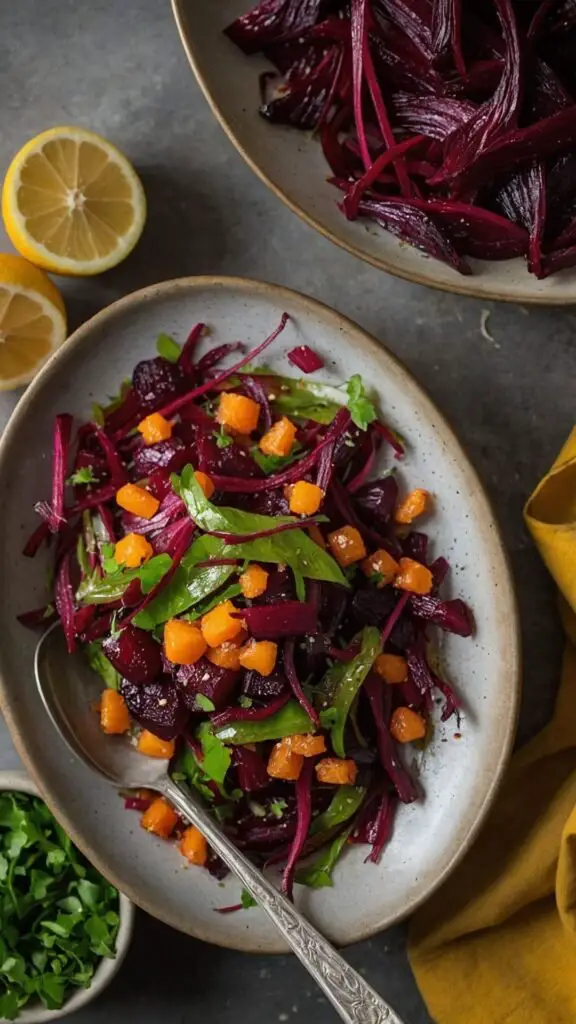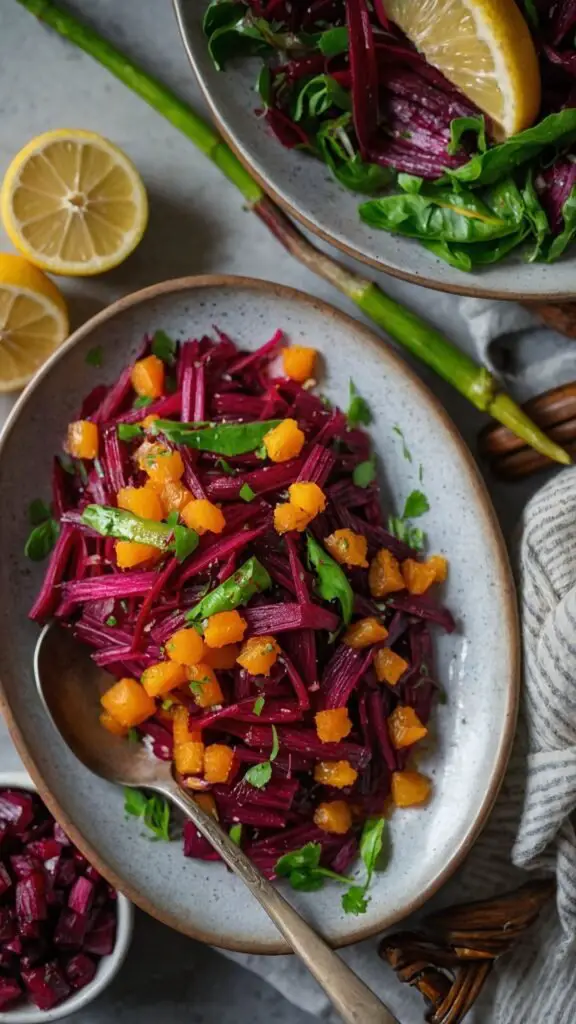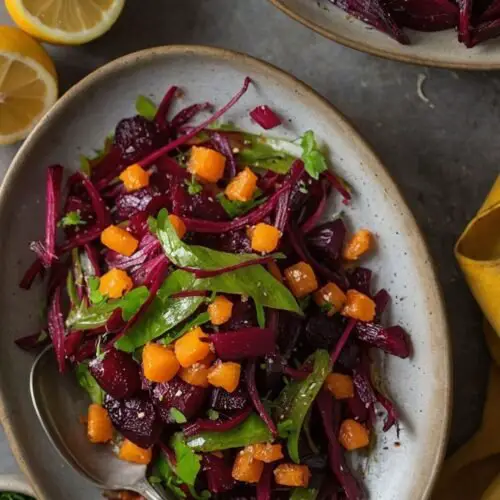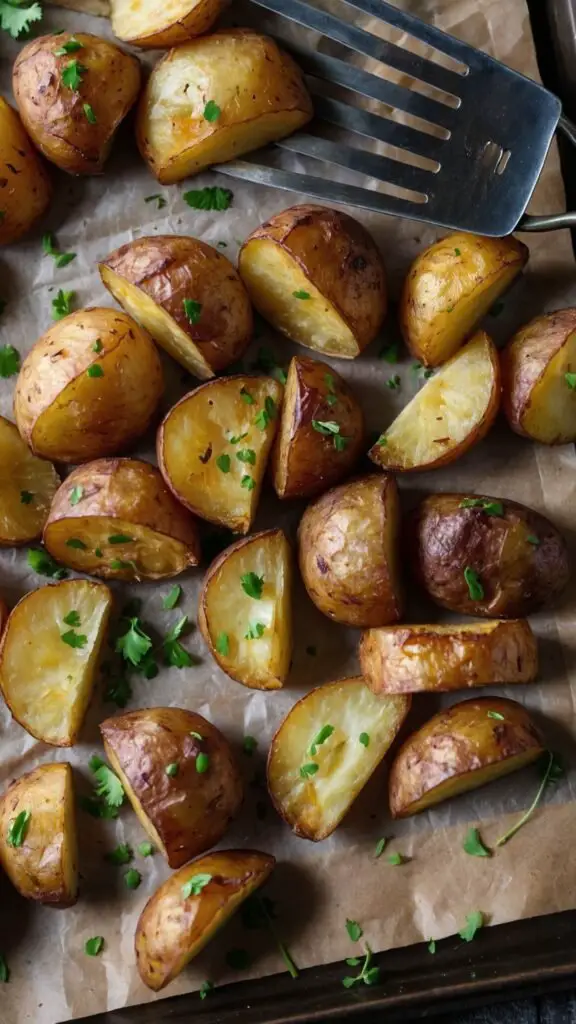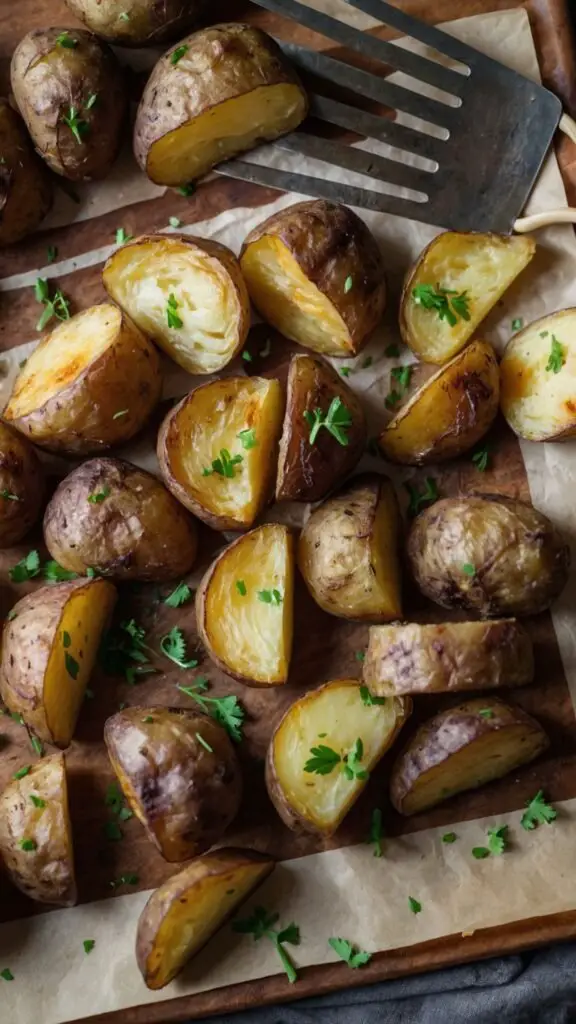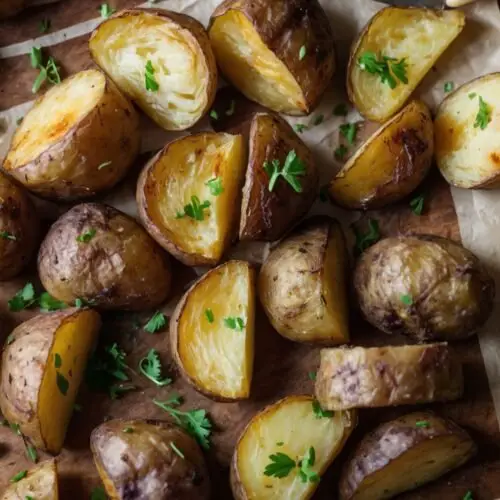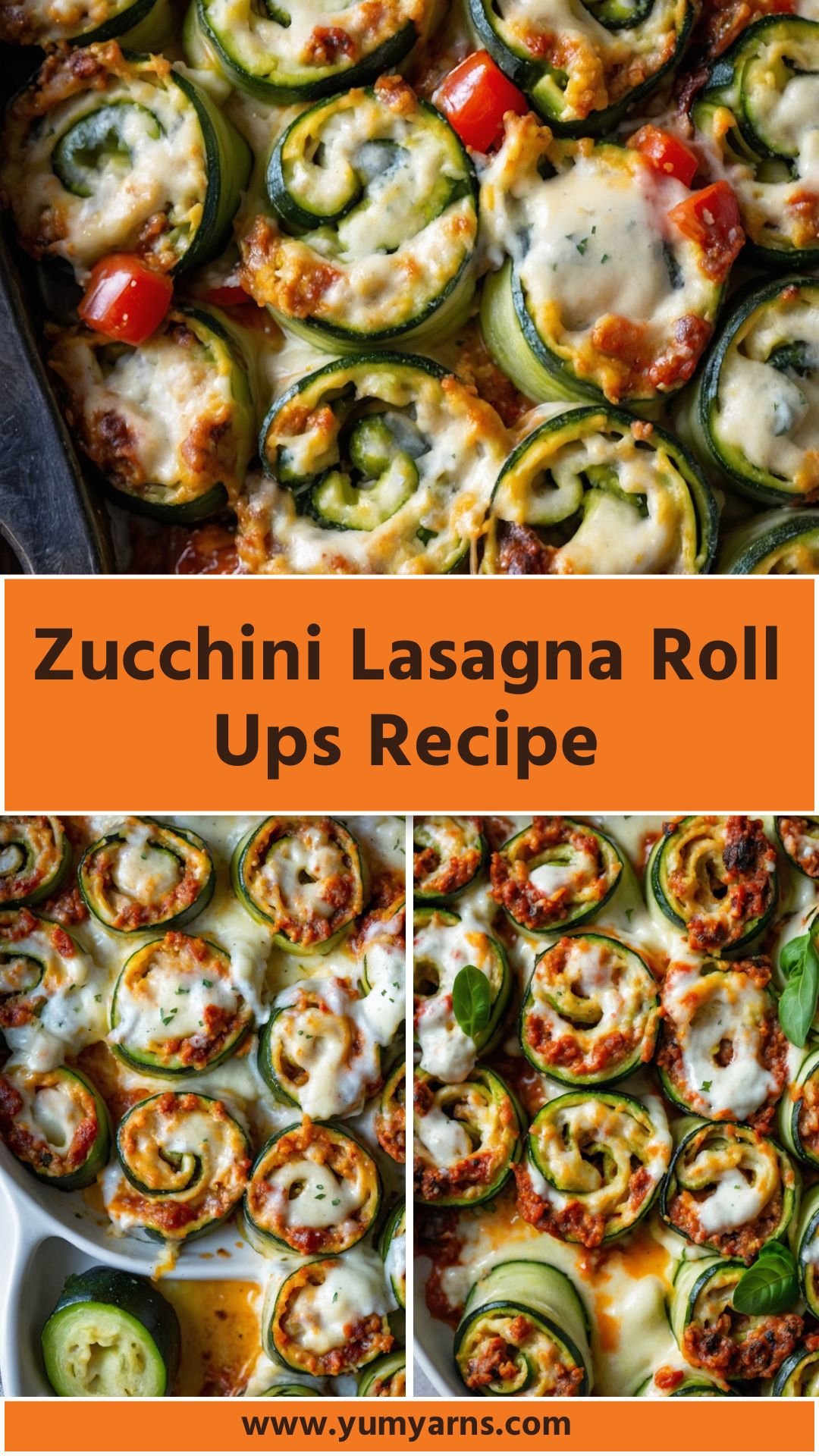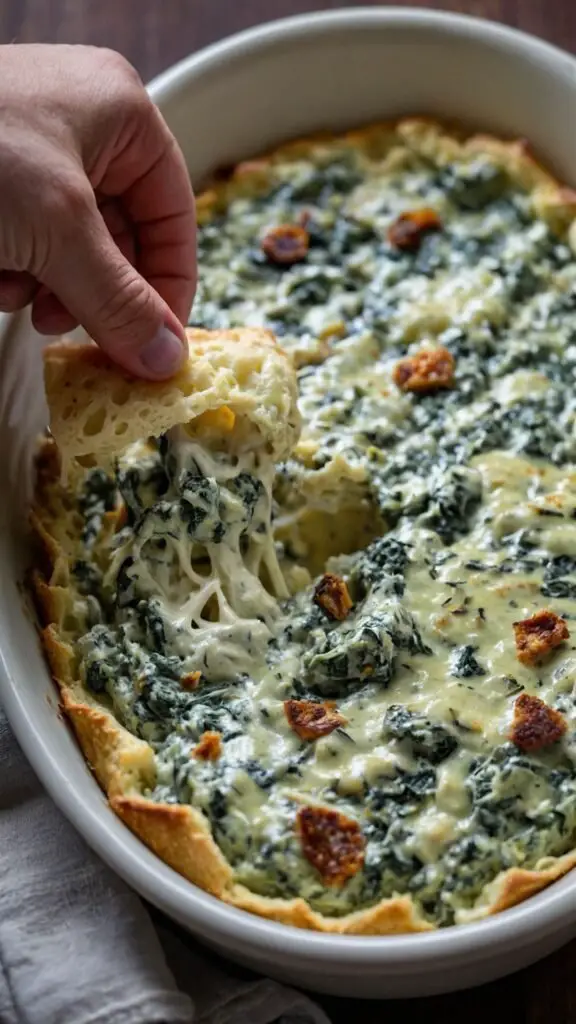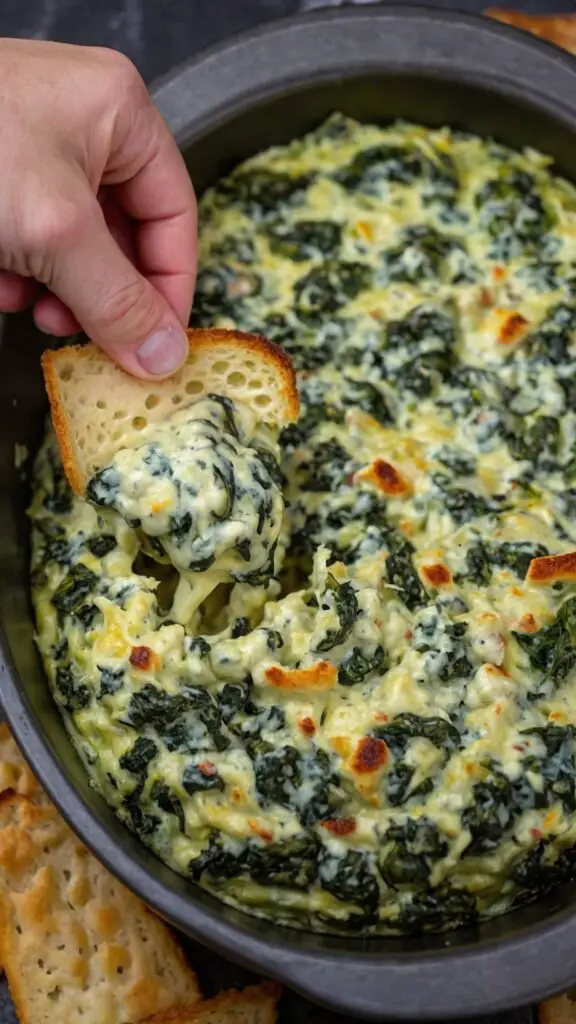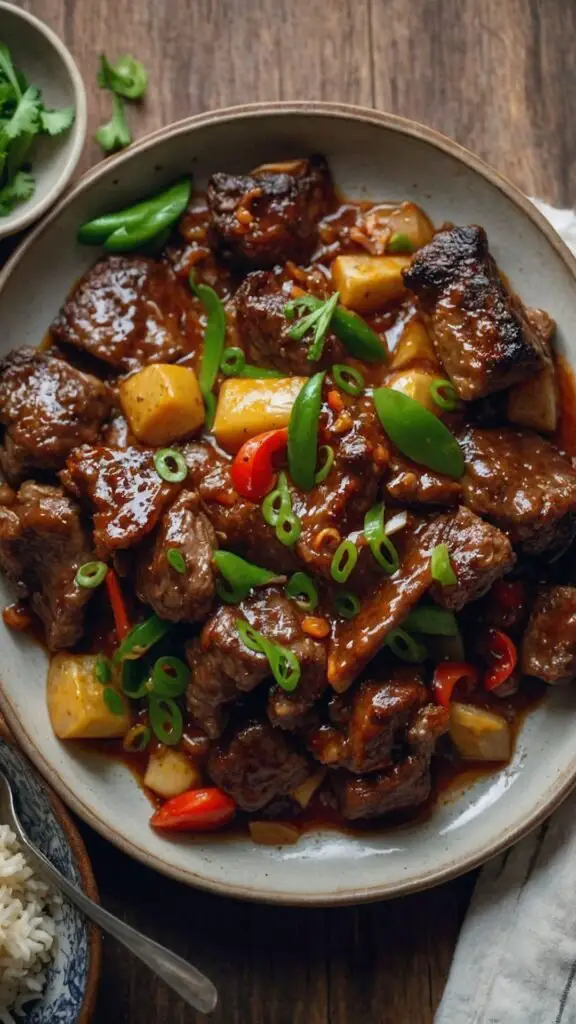Picture yourself on a sun-kissed terrace in Italy, surrounded by laughter and the aroma of fresh ingredients. The day is warm, and snacks are essential. That’s where bruschetta struts in like a superstar. It’s simple yet elegant. Nothing beats the delightful crunch of toasted bread topped with juicy tomatoes and herbs.
You might wonder why bruschetta is so special. Well, it’s versatile, easy to make, and perfect for gatherings. I’ve used this recipe for everything from casual barbecues to fancy gatherings. Just like the Italian Pasta Salad I adore, bruschetta never disappoints. Let’s dive into the magic of this dish and explore how you can whip it up in no time.

Pairing Suggestions
Bruschetta makes for a stunning appetizer, but pairing it with the right drinks can elevate your experience. A crisp white wine, like Sauvignon Blanc, complements the fresh tomato topping beautifully. If you’re feeling adventurous, a light rosé is also a great companion. Picture this: sipping chilled wine while nibbling on bruschetta, the sun setting in the background. It’s relaxing at its finest. For non-alcoholic options, try sparkling water with a slice of lemon or a homemade Italian soda for a refreshing kick.
Why This Recipe?
I can’t emphasize enough why this bruschetta is a must-try. It embraces fresh ingredients, allowing their flavors to shine through. Each bite bursts with taste, reminding me of my travels through Italy. As a registered dietitian and food enthusiast, I focus on health without sacrificing flavor. This bruschetta recipe is no exception. It’s packed with nutritious tomatoes and aromatic herbs. Plus, it’s incredibly easy to prepare, making it a favorite for busy weekends.
When I came up with this recipe, I thought about the ingredients that make bruschetta sing. I chose ripe Roma tomatoes for their sweetness and firm texture. Fresh basil and oregano add a garden-like freshness you can’t replicate with dried herbs. This dish is quick to make, yet it feels special.
You will also like the following Appetizer recipes!
- Crispy Oven Roasted Potatoes
- Savory Herb Churros with White Queso
- Copycat Cheesy Root Vegetable Gratin
Ingredients List
Here’s what you need for a vibrant bruschetta.
For the Tomato Mixture:
- 4 garlic cloves, minced – Reduced from five for balance.
- 6 Roma tomatoes (about 1.5 lbs), diced – They bring that classic tomato flavor.
- 1 teaspoon finely chopped fresh oregano – Introduces an herby depth.
- 1/3 cup fresh basil leaves, finely chopped – Adds a lovely green note.
- 1 tablespoon aged balsamic vinegar – A hint of sweetness and acidity.
- Zest of 1 lemon – Brightens up every bite.
- 2 tablespoons cold-pressed extra virgin olive oil – The liquid gold that ties it all together.
- 1/2 teaspoon fine sea salt – Enhances the flavor.
- 1/4 teaspoon freshly ground black pepper – A little kick.
For the Toasts:
- 3 tablespoons extra virgin olive oil – Keeps the bread glorious.
- 1 crusty baguette – The foundation of our masterpiece.
- 1/3 cup freshly shredded Parmesan cheese – Because cheese makes everything better!
How to Make Bruschetta: Step-by-Step
Step 1: Prepare the Tomato Mixture
In a mixing bowl, combine the diced Roma tomatoes, minced garlic, fresh oregano, and basil. The fragrance of fresh herbs is heavenly. Add the aged balsamic vinegar and lemon zest, mixing gently to incorporate everything. Drizzle in the cold-pressed extra virgin olive oil, then sprinkle in the salt and pepper. Make sure you taste it! Adjust seasoning as needed. Let this mixture sit for about 10-15 minutes. This allows the flavors to mingle and deepen, like a fine wine.
Step 2: Toast the Baguette
While the tomato mixture is resting, slice your crusty baguette into 1/2-inch thick slices. Preheat your oven to 400°F (200°C). Brush one side of each slice with extra virgin olive oil. Place them on a baking sheet, oiled side up, and toast them for 5-7 minutes until golden and crispy. Keep an eye on them—nobody likes burnt toast!
Step 3: Assemble
Once the bread is toasted to perfection, remove it from the oven and let it cool slightly. Now comes the fun part! Spoon the tomato mixture generously onto each slice of toast. And here’s a tip: don’t skimp! Remember to finish each piece with a sprinkle of freshly shredded Parmesan cheese. This adds a delightful savory element that’ll have everyone reaching for seconds.
Step 4: Serve
Serve immediately. Let your guests enjoy the fresh, delicious bruschetta while the toasts are still warm and crispy. You might want to prepare a little extra tomato mixture—trust me, it’ll disappear faster than you think!
Recipe Notes
Here’s a quick look at the ingredients used and how they contribute to this lovely dish:
- Garlic: Minced garlic adds a pungent kick, but if you’re not a huge fan, reduce the amount.
- Roma Tomatoes: These tomatoes are meaty and have fewer seeds than other varieties, making them perfect for bruschetta.
- Fresh Oregano and Basil: Using fresh herbs enhances flavor. Dried herbs lack the vibrancy of fresh ones.
- Balsamic Vinegar: The aged version has a smoother, sweeter taste that balances the acidity of the tomatoes beautifully.
- Lemon Zest: This tiny addition brightens the overall flavor. It’s amazing what a little zest can do!
- Extra Virgin Olive Oil: Use high-quality oil. The taste difference is noticeable.
- Parmesan Cheese: Freshly shredded adds a creaminess that complements the tomatoes perfectly.
Recipe Variations
One of the greatest things about bruschetta is that it’s easily adaptable. Here are some variations to make it your own:
- Add Avocado: For a creamy twist, top the bruschetta with sliced avocado.
- Caprese Style: Use sliced fresh mozzarella instead of or alongside the Parmesan, and add a drizzle of balsamic glaze.
- Pesto Twist: Spread a thin layer of pesto on the toasted bread before adding the tomato mix.
- Spicy Kick: Toss in some red pepper flakes to the tomato mixture for heat.
- Roasted Veggies: Mix in roasted bell peppers or zucchini for added flavor and texture.
- Fruit-Infused: Try peaches or strawberries in place of tomatoes for a sweet twist, especially in summer.
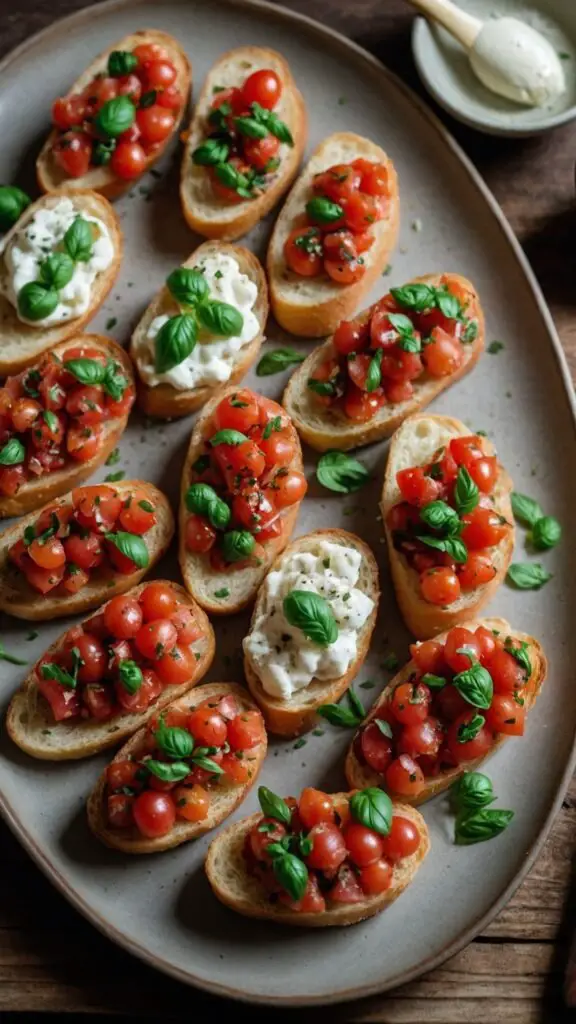
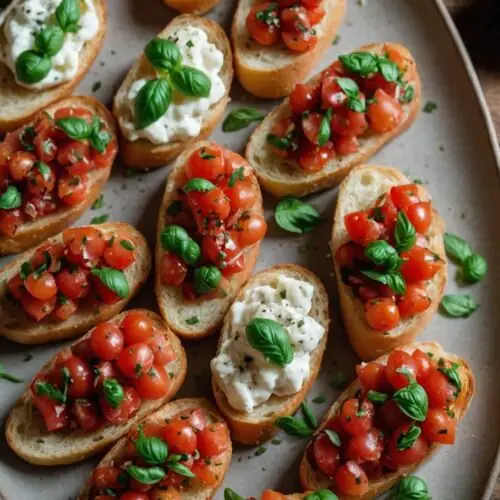
Bruschetta Recipe
Equipment
- Baking sheet
- Mixing bowl
Ingredients
- 4 garlic cloves minced
- 6 Roma tomatoes about 1.5 lbs, diced
- 1 teaspoon finely chopped fresh oregano
- 1/3 cup fresh basil leaves finely chopped
- 1 tablespoon aged balsamic vinegar
- Zest of 1 lemon
- 2 tablespoons cold-pressed extra virgin olive oil
- 1/2 teaspoon fine sea salt
- 1/4 teaspoon freshly ground black pepper
- 3 tablespoons extra virgin olive oil
- 1 crusty baguette
- 1/3 cup freshly shredded Parmesan cheese
Instructions
Step 1: Prepare the Tomato Mixture
- In a mixing bowl, combine the diced Roma tomatoes, minced garlic, fresh oregano, and basil. The fragrance of fresh herbs is heavenly. Add the aged balsamic vinegar and lemon zest, mixing gently to incorporate everything. Drizzle in the cold-pressed extra virgin olive oil, then sprinkle in the salt and pepper. Make sure you taste it! Adjust seasoning as needed. Let this mixture sit for about 10-15 minutes. This allows the flavors to mingle and deepen, like a fine wine.
Step 2: Toast the Baguette
- While the tomato mixture is resting, slice your crusty baguette into 1/2-inch thick slices. Preheat your oven to 400°F (200°C). Brush one side of each slice with extra virgin olive oil. Place them on a baking sheet, oiled side up, and toast them for 5-7 minutes until golden and crispy. Keep an eye on them—nobody likes burnt toast!
Step 3: Assemble
- Once the bread is toasted to perfection, remove it from the oven and let it cool slightly. Now comes the fun part! Spoon the tomato mixture generously onto each slice of toast. And here’s a tip: don’t skimp! Remember to finish each piece with a sprinkle of freshly shredded Parmesan cheese. This adds a delightful savory element that’ll have everyone reaching for seconds.
Step 4: Serve
- Serve immediately. Let your guests enjoy the fresh, delicious bruschetta while the toasts are still warm and crispy. You might want to prepare a little extra tomato mixture—trust me, it’ll disappear faster than you think!
Notes
- Garlic: Minced garlic adds a pungent kick, but if you’re not a huge fan, reduce the amount.
- Roma Tomatoes: These tomatoes are meaty and have fewer seeds than other varieties, making them perfect for bruschetta.
- Fresh Oregano and Basil: Using fresh herbs enhances flavor. Dried herbs lack the vibrancy of fresh ones.
- Balsamic Vinegar: The aged version has a smoother, sweeter taste that balances the acidity of the tomatoes beautifully.
- Lemon Zest: This tiny addition brightens the overall flavor. It’s amazing what a little zest can do!
- Extra Virgin Olive Oil: Use high-quality oil. The taste difference is noticeable.
- Parmesan Cheese: Freshly shredded adds a creaminess that complements the tomatoes perfectly.
Nutrition
Frequently Asked Questions
Q1: Can I make bruschetta ahead of time?
You can prepare the tomato mixture a few hours in advance. However, toast the bread right before serving to keep it crispy.
Q2: What type of bread works best for bruschetta?
A crusty baguette is ideal, but ciabatta or sourdough also works wonderfully.
Q3: How long can I store leftovers?
Store the tomato mixture in an airtight container in the fridge for up to 2 days. Toasts are best served the day of.
Q4: Is this dish vegetarian?
Yes, bruschetta is completely vegetarian and can also be made vegan by omitting the cheese.
Q5: Can I use canned tomatoes for this recipe?
While fresh tomatoes are preferred, you can use high-quality canned tomatoes in a pinch. Draining them well is key.
Q6: What can I do if I can’t find fresh herbs?
You can use dried herbs, though the flavor will be less vibrant. Use about a third of the amount since dried herbs are more concentrated.
Conclusion
Bruschetta is a celebration of fresh ingredients and simple preparation. It’s one of those dishes that feels special yet doesn’t require a culinary degree. Whether you’re hosting a summer party or enjoying a quiet evening at home, this recipe has a place at your table.
As you gather your ingredients and toast up that baguette, think about the delightful pairing of flavors, the vibrant colors of fresh produce, and the joy of sharing good food. I hope you enjoy making this bruschetta as much as I do. So go ahead, roll up your sleeves, and enjoy a slice of Italy in your kitchen!

